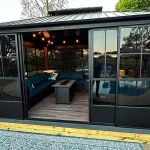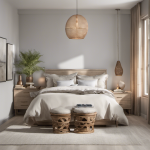
A Growing Trend in Modern Families
As modern living evolves, more families are embracing the concept of multigenerational living. According to a Pew Research Center report, the number of Americans living in multigenerational households has reached a record high. Various factors, including economic challenges, an aging population, and cultural influences, drive this trend.
One of the primary benefits of multigenerational living is the opportunity for families to pool their financial resources. Families can save money and achieve better financial stability by sharing expenses like mortgage payments and utility bills. Forbes highlights how this living arrangement can also alleviate the burden of caregiving responsibilities, as family members can share the responsibility of caring for both the elderly and the young.
Enhanced Family Connections
Multigenerational living fosters stronger family bonds by providing opportunities for family members to connect and interact with one another. AARP emphasizes that living together can offer emotional support, enable sharing of skills and knowledge, and create a sense of belonging among family members.
Designing a Functional and Harmonious Multigenerational Home
To ensure a harmonious and functional living environment, it is essential to consider each family member's specific needs and preferences. HGTV suggests creating designated private spaces for each generation while maintaining communal areas for family gatherings and shared activities.
Establishing Effective Communication
Open communication is critical to a successful multigenerational home. Family members should regularly discuss their needs, preferences, and any concerns that may arise. Psychology Today recommends setting boundaries, creating house rules, and establishing routines to ensure a smooth coexistence.
Making Space for Privacy and Togetherness
As families come together under one roof, balancing privacy and togetherness is essential. Designing spaces catering to individual needs while encouraging family bonding can help create a harmonious living environment. Consider incorporating separate entrances, soundproofing, and designated quiet areas to allow for independence and connection.
Financial and Emotional Support for All Ages
Multigenerational living can provide financial and emotional support to family members of all ages. By sharing resources, families can reduce living expenses and allocate funds to other priorities, such as education, healthcare, or leisure activities. Additionally, the emotional support and companionship from living with loved ones can help reduce stress and improve overall well-being.
Adapting to Changing Needs Over Time
The needs of a multigenerational household are bound to evolve. Being adaptable and flexible is crucial to maintaining a harmonious living environment. This may involve modifying the home's layout or furnishings, reevaluating shared responsibilities, and maintaining open communication. By staying responsive to the changing needs of family members, multigenerational households can continue to thrive and enjoy the benefits of shared living for years to come. Furthermore, embracing sustainable living trends can greatly enhance the quality of life in a multigenerational household. Simple changes like adopting energy-efficient appliances, reducing waste, and incorporating eco-friendly practices can foster a sense of collective responsibility and ensure a healthier environment for future generations. Prioritizing sustainability not only aligns with broader global efforts but also strengthens the household’s ability to adapt to long-term lifestyle changes.
In conclusion, multigenerational living offers numerous benefits, from financial savings to stronger family bonds. By considering the unique needs of each family member, creating a functional living space, and maintaining open communication, families can create a harmonious and supportive multigenerational home.

Laura Roberts is a talented and versatile writer passionate about creating engaging and thought-provoking content. Laura has honed her freelance writing and editing skills for various publications covering home improvement, interior design, and lifestyle.














